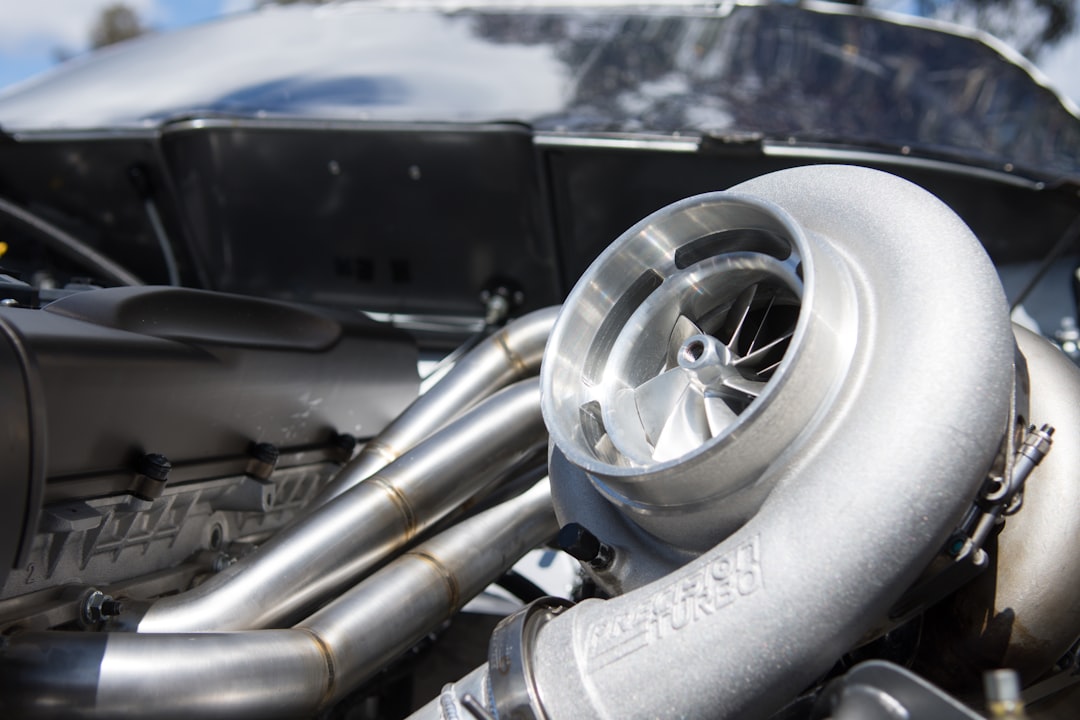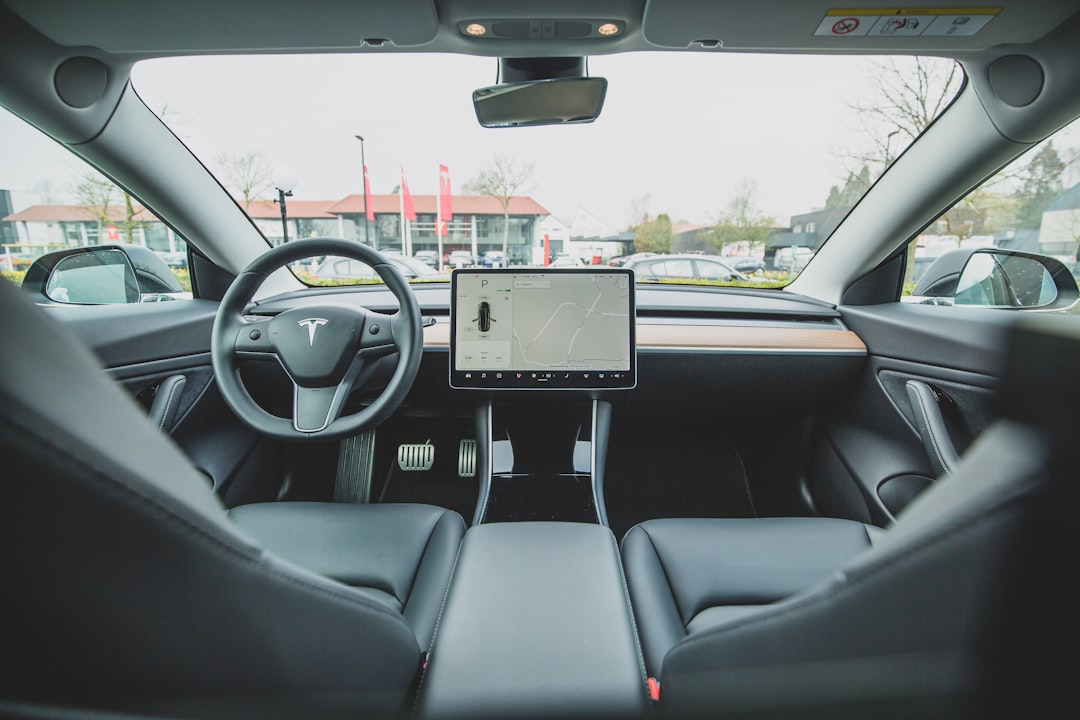What is it about?
This paper investigates the effectiveness of several variable valve timing (VVT) strategies in optimizing diesel engine performance and exhaust thermal management. A one-dimensional engine model was used to simulate different VVT strategies at steady and transient conditions. The results showed that advanced exhaust valve opening (AEVO) and late intake valve closing (LIVC) resulted in the highest exhaust temperature increment, with a mean temperature increment of 27°C during the low-speed phase of the worldwide harmonized light vehicles test cycle (WLTC). However, this strategy also resulted in a fuel penalty of 6%. Exhaust valve re-opening (EVrO) led to lower nitrogen oxide (NOx) and carbon monoxide (CO) emissions, but it also resulted in a slower DOC light-off time. Overall, the best trade-off between exhaust temperature increment and fuel consumption was achieved with the EP + IP strategy, which combined AEVO and LIVC. This strategy also resulted in the best light-off and fuel consumption trade-off. EVrO was the most effective strategy for reducing NOx and CO emissions, but it had the lowest fuel economy.
Featured Image

Photo by Danny Sleeuwenhoek on Unsplash
Why is it important?
This paper is important from a technological point of view because it provides valuable insights into the use of variable valve timing (VVT) strategies to optimize diesel engine performance and exhaust thermal management. The research findings have the potential to lead to the development of more efficient and environmentally friendly diesel engines. Here are some of the key findings of the paper that are particularly relevant from a technological point of view: - AEVO and LIVC are effective strategies for increasing exhaust temperature. This is important because a higher exhaust temperature is essential for efficient after-treatment system operation. - EP + IP is the best overall strategy for optimizing exhaust temperature increment and fuel consumption. This strategy offers a good balance between performance and efficiency. - EVrO is the most effective strategy for reducing NOx and CO emissions. However, it comes at the cost of fuel economy. These findings can be used to guide the development of new VVT systems for diesel engines. By taking advantage of these strategies, engine manufacturers can create engines that meet both performance and emissions standards while also improving fuel economy. Here are some additional points that make this paper technologically important: -The study uses a rigorous one-dimensional engine model to simulate different VVT strategies. This allows for a more accurate assessment of the impact of these strategies on engine performance and emissions. - The study considers both steady-state and transient conditions. This is important because engine operation can vary significantly under different driving conditions. - The study provides a comprehensive comparison of different VVT strategies. This information can help engine manufacturers make informed decisions about which strategies to use. This paper is also important from a social point of view because it has the potential to help improve air quality and reduce greenhouse gas emissions. Diesel engines are a major source of NOx and CO emissions, which are harmful to human health and contribute to climate change. By developing more efficient and environmentally friendly diesel engines, we can reduce the negative environmental impact of these vehicles. Here are some of the specific ways in which the findings of this paper can be used to improve air quality and reduce greenhouse gas emissions: - Increased exhaust temperature can help to improve the efficiency of after-treatment systems, which are designed to remove harmful pollutants from diesel exhaust. This can lead to a significant reduction in NOx and CO emissions. - More efficient diesel engines can use less fuel, which can reduce greenhouse gas emissions. This is particularly important because diesel engines are a major source of transportation-related greenhouse gas emissions. - The development of new VVT strategies can help to make diesel engines cleaner and more efficient, which can benefit both the environment and public health. In addition to these direct benefits, the findings of this paper can also help to improve public perception of diesel engines. By showing that diesel technology can be made cleaner and more environmentally friendly, we can help to encourage the use of diesel vehicles and reduce reliance on gasoline-powered vehicles. Overall, this paper has the potential to make a significant contribution to improving air quality and reducing greenhouse gas emissions. By developing more efficient and environmentally friendly diesel engines, we can create a cleaner and healthier future for all.
Perspectives
I am excited to share the findings of our research on the effectiveness of variable valve timing (VVT) strategies in optimizing diesel engine performance and exhaust thermal management. Our study demonstrates that VVT can be a powerful tool for improving diesel engine efficiency, emissions, and overall performance. One of the most significant findings of our study is that the EP + IP strategy, which combines advanced exhaust valve opening (AEVO) and late intake valve closing (LIVC), offers the best overall trade-off between exhaust temperature increment and fuel consumption. This strategy achieves a mean temperature increment of 27°C during the low-speed phase of the worldwide harmonized light vehicles test cycle (WLTC) with a fuel penalty of only 6%. This represents a significant improvement over traditional VVT strategies, which often sacrifice fuel economy for higher exhaust temperatures. Another important finding is that EVrO, or exhaust valve re-opening, is the most effective strategy for reducing NOx and CO emissions. EVrO works by allowing exhaust gases to re-enter the cylinder during the intake stroke. This causes a decrease in combustion temperature and a reduction in NOx and CO emissions. However, EVrO also results in a slower DOC light-off time, which means that it takes longer for the after-treatment system to reach its full efficiency. Overall, our study provides valuable insights into the use of VVT strategies to optimize diesel engine performance and exhaust thermal management. These findings have the potential to lead to the development of more efficient, environmentally friendly, and cleaner diesel engines. As an author of this paper, I am particularly proud of the comprehensiveness and rigor of our research. We used a sophisticated one-dimensional engine model to simulate different VVT strategies under both steady-state and transient conditions. This allowed us to obtain a more accurate and realistic assessment of the impact of these strategies on engine performance and emissions. I am also excited about the potential applications of our findings. The EP + IP strategy, in particular, has the potential to be a game-changer for diesel engine efficiency. By combining AEVO and LIVC, this strategy can achieve significant improvements in exhaust temperature without sacrificing too much fuel economy. This could lead to the development of diesel engines that meet both performance and emissions standards while also being more fuel-efficient.
Dr. Francisco José Arnau Martínez
Universitat Politecnica de Valencia
Read the Original
This page is a summary of: Diesel engine optimization and exhaust thermal management by means of variable valve train strategies, International Journal of Engine Research, January 2020, SAGE Publications,
DOI: 10.1177/1468087419894804.
You can read the full text:
Resources
Contributors
The following have contributed to this page










